Sensors already equip a range of tools to enhance monitoring capacity for conservation. Some of the higher bandwidth technologies, like camera traps and acoustic monitoring systems, have been essential elements of the conservation toolkit for decades, and thus have enough users that we've created dedicated WILDLABS groups to address them. But a whole range of lower bandwidth sensors beyond these core technologies are being increasingly integrated into conservation monitoring systems, and offer rich new insights into the wildlife and ecosystems we're all working to protect. As with many technologies, cost and access have historically been challenges to the adoption of new sensors, but with low-cost and open-source solutions on the rise, we're excited to see what the future of this space holds.
Getting Started with Sensors:
- Watch Shah Selbe's Tech Tutors episode on scaling FieldKit, an open-source conservation sensor toolbox, from a project to a successful conservation tech product.
- Check out our Virtual Meetup about Low-Cost, Open-Source Solutions in conservation tech, including a talk by Alasdair Davies on the Arribada Initiative's work with thermal sensors in early warning systems.
- For a more in-depth introduction, watch the first video in our datalogger mini-series: Freaklabs: How do I get started with Arduino?
In this group, you'll meet others who are using and innovating diverse sensors in their work, discuss ways to make sensors more effective & accessible for conservationists, learn about what sensors are already helping us accomplish in the field, and have the opportunity to ask and answer questions. Join this group to get started!
Header image: Emma Vogel, University of Tromsø
No showcases have been added to this group yet.
- @maddy
- | Dr
Iam a Doctorate in molecular bology by profession & associated with a tech startup, focued on IoT/sensor based automation solutions. But I spend half of my time to document and conserve local & wildlife arond us and trying to explore our technology in conservation.Love to join
- 0 Resources
- 0 Discussions
- 5 Groups
Martin Wainaina Chege is a registered Geomatics Expert with experience in GIS software development, Remote sensing, Surveying, and Environmental and Social Impact Assessment (ESIA) with theoretical knowledge, technical and practical skills in IoT, Software Engineering, data


- 1 Resources
- 7 Discussions
- 5 Groups
trying to understand and improve the welfare of all animals that can suffer


- 4 Resources
- 6 Discussions
- 7 Groups
Cornell University


- 0 Resources
- 0 Discussions
- 12 Groups
- @Fatuma
- | She/Her
I aim to transition my career towards conservation technology after gaining two years of experience in the tech industry.
- 0 Resources
- 0 Discussions
- 13 Groups
Robotics and IoT Engineer living in Costa Rica since 2000
- 0 Resources
- 1 Discussions
- 4 Groups
Neuroscientist & engineer looking for a data/R&D role in conservation.
- 0 Resources
- 0 Discussions
- 17 Groups
- @hyodopenguin
- | she/her
I am currently a rising junior at UC Berkeley studying data science. I hope to apply data with biodiversity, especially by utilizing camera traps for species classification. People in conservation tech are truly living my dream careers, and I can't wait to get even more inspired!

- 0 Resources
- 5 Discussions
- 23 Groups
- @iainhook
- | Mr
Passionate supporter of New Zealands predator free 2050 goals. Founder of both eTrapper Ltd - offering IoT solutions to enhance efficiencies of conservation projects, and Maungakiekie Songbird - a community based project to enhace local habitat around One Tree Hill in Auckland.
- 0 Resources
- 1 Discussions
- 6 Groups
- 0 Resources
- 0 Discussions
- 12 Groups
Systems Engineer at Edge Impulse, experiencce with hands-on edge machine learning for wildlife conservation

- 1 Resources
- 2 Discussions
- 4 Groups
- 0 Resources
- 4 Discussions
- 7 Groups
Careers
The FieldKit team is now seeking a freelance Graphic Designer with a passion for conservation technology! If you'd like to use your skills to connect with a conservation technology community, please send a cover letter...
8 March 2022
In pursuit of saving the Monarch butterflies, Carlo Mondavi- pioneer of the Monarch challenge- was inspired to develop the world's first fully electric smart tractor tractor with co-founder and Chief Executive, Praveen...
29 November 2021
In this article, Swarm Technologies give a detailed analysis of the tradeoffs between the most common IoT connectivity solutions to improving food production, combating climate change, optimizing supply chains and many...
19 November 2021
GroupGets has a Group buy campaign for a μMoth v1.1(Round 2), that runs till Sat, 06 Nov 2021 12:55:00 PDT. The μMoth v1.1 goes for a Single-unit price of $99.99 + shipping.To join this buy, kindly visit this page
4 November 2021
In their three-part interview from our new series Technical Difficulties, Colby Loucks and Eric Becker share the failures they've encountered and learned from throughout six years of working on the WWF-US Wildlife Crime...
27 October 2021
This article explores the use of IoT and Machine Learning Technologies in Ewaso Nyiro River, Kenya - which serves several communities as well as wildlife in Olpejeta Conservancy and Lewa Conservancy, among others. Data...
21 October 2021
In their three-part interview from our new series Technical Difficulties, Colby Loucks and Eric Becker share the failures they've encountered and learned from throughout six years of working on the WWF-US Wildlife Crime...
20 October 2021
In his contribution to the Technical Difficulties Editorial Series, Internet of Elephants founder Gautam Shah shares the lessons learned from challenges throughout his unique career path as an entrepreneur working and...
14 October 2021
In their three-part interview from our new series Technical Difficulties, Colby Loucks and Eric Becker share the failures they've encountered and learned from throughout six years of working on the WWF-US Wildlife Crime...
13 October 2021
In this limited content series from Ashley Rosen, you'll explore best practices for designing enclosures for communication network equipment, and learn how airflow and temperatures inform effective enclosure design....
24 September 2021
Article
The new μMoth is now available on GroupGets! These units are going quickly, so join the order quickly to be among the first to try the world's smallest full-spectrum acoustic development board! Join the GroupGets order...
27 May 2021
The Conservation Technology Award is now seeking applicants! This award will provide two grants, each in the amount of $15,000 USD, to organizations that are deploying technology to advance their work in conservation....
4 May 2021
August 2025
event
September 2025
event
March 2026
November 2023
event
17 Products
Recently updated products
121 Products
3 R&D Projects
84 Organisations
Recently updated products
Recently updated R&D Projects
Recently updated organisations
| Description | Activity | Replies | Groups | Updated |
|---|---|---|---|---|
| Will your startup be involved in sensor networks for conservation? I'm very interested. Currently we create sensor networks for developmental infrastructure and agriculture... |
|
Sensors | 6 years 5 months ago | |
| Hi everyone. I'm Akiba and I'm an engineer by trade specializing in wireless sensor networks and communications. I generally work with groups like World Bank on... |
|
Sensors | 6 years 5 months ago | |
| Subcutaneous pittags that also read temperature (frustratingly) read only a limited range of temperatures - however, I hear that can be... |
|
Sensors | 6 years 6 months ago | |
| Hi Ted, This is all very interesting. The solution you describe seems eminently doable and in fact quite cheap. So doable and cheap that it may behoove one to... |
|
Sensors | 6 years 6 months ago | |
| Yes, I agree it's a tough problem - i'm certainly stumped ;) but thanks so much for your reply and counter question - the goal is to find these gillnets and... |
|
Sensors | 6 years 8 months ago | |
| Hi Tony, I'm leading a cross disciplinary group of researchers at Deakin University in Australia to build new technology for monitoring wildlife and engage citizen scientists... |
|
Sensors | 7 years 4 months ago | |
| The current project is in open plains. From a handler perspective the distance will be from 20m -100m. I will be working at night so it will be looking for me target, the Plains... |
|
Sensors | 7 years 4 months ago | |
| @hikinghack used twitter to flag a thread on hackteria that members of this group might be interested in about DIY time-lapse soil... |
|
Sensors | 7 years 4 months ago | |
| Also if you are still looking for a solution this was published earlier this year and gives recommendations for soundscape microphones : http://onlinelibrary.wiley.com/doi/10... |
+5
|
Sensors | 7 years 9 months ago | |
| If anything belongs in the 'have you seen this' group, it's this project: Researchers at Binghamton University have created... |
|
Sensors | 7 years 10 months ago | |
| The University of Washington is reporting that they've shattered the long-range communications barrier for devices that consume almost... |
|
Sensors | 7 years 11 months ago | |
| My own experience is with the FLIR iphone attachment, just informal testing, but hasn't been that great at finding animals. I also think it would work better in the... |
|
Sensors | 7 years 11 months ago |
Using GoPro cameras? Why not get sponsored by them?
29 December 2015 9:40pm
1 November 2016 1:09pm
All of it can be applied to conservation though!
1 November 2016 1:45pm
I am not suggesting that GoPro cameras do not have applications in conservation, but if you follow the link you posted you will find questions being asked that a conservation project will be unable to answer.
Zoohackathon: 'END LOOP - Coding to end wildlife trafficking'
22 September 2016 12:00am
Perspectives from the World Ranger Congress
10 August 2016 12:00am
Has technology provided a one-stop measure to halt albatross bycatch in fisheries?
5 August 2016 12:00am
How can technology help us monitor those small cold-blooded critters that live in caves?
25 July 2016 12:00am
Passive Acoustic Monitoring: Listening Out for New Conservation Opportunities
29 June 2016 12:00am
Wildlife Crime Tech Challenge Accelerator Bootcamp
24 June 2016 12:00am
Science Makers: sensor networks on 2 July
22 June 2016 8:09am
22 June 2016 4:04pm
Thanks for sharing this event, Jenny! Looks really interesting, hope to see you there.
Portable DNA Sequencer
24 March 2016 4:51pm
26 April 2016 6:53pm
Thanks, Adam, for initating a discussion about the MinION. It certainly seems to have a lot of promise, however the scientists who are currently field testing it detect very high error rates. It's been on my radar as a possible field kit for extracting DNA out of wood as it gets processed into various forest products through the supply chain. The implication here is that the part of a tree that is made into forest products is made up of dead cells and thus it is very difficult to extract quality and quantity DNA out of wood. This, combined with the high error rates makes it 'still very much in development' for forest products - but perhaps it'd be suitable sooner for other applications in the conservation world. There's a professor at New Mexico State Univ. who has been working with the MinION for a while now on wood - Brook Milligan. He recently gave a talk at the 'London Calling' Oxford Nanopore (maker of the Minion) conference that is worth watching: https://londoncallingconf.co.uk/2015/videos/view/241
22 June 2016 10:43am
Hi John and Adam,
I've been hearing a lot about Oxford Nanopore Technologies and MinION over the last few months, and while it sounds fanastic, it's been difficult to get an understanding about the potential and limitations of this piece of tech, particularly as relates to conservaiton applications. So hearing your experiences, John, is really interesting.
For anyone interested in learning more about MinION and nanopore technology, I've just came across a thorough article in the Atlantic about the sequencer that was helpful for me as a total novice (though a very interested one!) in the world of nanotechnology and eDNA. It gives context to the MinION in terms of history, current applications and potential applications. It also features one of our community members, Jon Whetton, who is also a USAID Wildlife Crime Tech Challenge Winner, talking about the potential applications to conservation:
The etymology of VolTRAX may be farcical, but its purpose is not. This domino-sized add-on for the MinION is designed to prepare a biological sample—say bodily fluids, or swabs of soil—for sequencing. It moves liquid through a network of fine channels, bombards it with chemical reagents to extract DNA, and loads that DNA into the MinION. “We spend a lot more time in the lab preparing samples than we do sequencing,” says Loman. “If, and it’s a big if, you could drop the clinical sample onto the chip that does it all for you, it would be hugely advantageous.”
VolTRAX is set to go out to early users this summer. Jon Wetton, a geneticist and forensic scientist at the University of Leicester, wants to use it to fight illegal wildlife trafficking, by sequencing telltale genes that act as identity badges for different species. Conservationists have already used this technique, known as DNA barcoding, to track sources of elephant ivory or identify whale meat posing as sushi. But samples must be shipped for analysis, and “you’re looking at weeks or months to get the results back,” says Wetton. “That can’t be done on anything perishable, or if you’ve got a suspect in custody. But with an on-the-spot test, you could confiscate, arrest, or do something about it.”
With a nanopore sequencer, inspectors could tell the difference between a cut of beef or bushmeat from threatened apes and monkeys. They could analyze the blood on a suspected poacher’s tools to reveal the identity of the last animals it cut. They could work out if seized caviar belong to legitimate fish species or endangered sturgeon. “You could answer a whole slew of serious wildlife crime issues with the same test,” says Wetton.
That still leaves the significant problem of parsing the data, but Oxford Nanopore has a solution for that, too: an online hub called Metrichor, where people can connect to ready-made apps for analyzing DNA sequences. One such app, developed by Oxford Nanopore itself, is called “What’s In My Pot?” or WIMP. It takes sequences and identifies the organisms they belong to. The team have already field-tested it on microbes from a sewage-contaminated river behind their own building, and on unpasteurized milk from the back of a New York lorry.

Sensory: BBC Wildlife Director John Downer & the technology of ‘spy-cam’ filmmaking
13 May 2016 11:55am
Utilizing thermal imaging technology
27 April 2016 7:43pm
Text Messages from Teenage Gannets
25 April 2016 12:00am
Eggs Eggs and more Eggs
2 March 2016 1:05pm
24 March 2016 4:42pm
Latest news about this project was picked up by the BBC world service for a short interview
http://www.bbc.co.uk/programmes/p03nwl8g
You can also read more here:
http://spectrum.ieee.org/geek-life/hands-on/build-an-electronic-vulture-egg
Underwater sensors
18 March 2016 12:39am
Could Big Data Have Saved Cecil the Lion?
4 January 2016 12:07pm
12 February 2016 7:16pm
It's very interesting what you say about the strength of a name. I do think that anthropomorphism can be a good thing in the case of conservation. By giving Cecil a name and a life story (incidentally a very cosy British name, which is interesting in itself), it brings the issue into emotional focus. We are attracted to characters and stories, not data. The plight of a named lion strikes a stronger chord than the numbing statistic of 600 "un-named" lions dying every year.
So do we care more about nature if we make anthropomorphise it? I think yes, as it creates a relatable personal connection with our own lives.
I'd like to get in touch with you next week as this is an area I am very interested in exploring and I hope I can be of help. Paul
14 March 2016 4:37pm
We're just starting to look a lot at Storytelling in Wildbook (http://www.wildbook.org).
This is what a data profile looks like in Wildbook:
http://www.whaleshark.org/individuals.jsp?number=A-001
While we allow for basic anthropomorphism via nicknaming, it's still a very data centric view of what a combined group of reserchers knows about the animal.
We have experimented with social media profiles which interestingly have an analogous data schema as mark-recapture:
http://fb.wildme.org/wildme/public/profile/WS-A-001
But we want to go ever further with storytelling mediums (e.g., story maps?) that can be automated from scientific data input, especially where cit sci data and reserch data can be reliably mixed.
So in addition to a name, we want to build a relationship through a portrayal of its life history and even potentially a view of the social network of the animal participates in (if such data can be shared safely.).
16 March 2016 7:22am
That's great Jason. I think your approach can be very successful. I'm a little bit familiar with Wild Book through my contacts at IBEIS, who I believe you work with quite closely. I'd love to see how the work we are doing at Internet of Elephants can incorporate whale shark data. I'll message you separately to discuss.
An Internet of pigeons?
14 March 2016 4:16pm
Ecotech Grants from the Captain Planet Foundation
18 February 2016 12:00am
Bringing Conservation Technology to Life
17 February 2016 12:00am
Wildlife Crime Tech Challenge: Winners Announced!
22 January 2016 12:00am
Deep Coral Reef Exploration and Discovery: Two-way Technological Flow
24 December 2015 12:00am
Cheap Space, DIY Imaging and Big Data
21 December 2015 12:00am
The Impact of the Internet of Things
10 December 2015 12:00am
The Social Lives of Conservation Technologies and Why They Matter
2 November 2015 12:00am

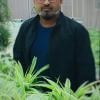

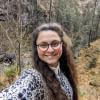

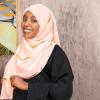


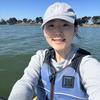




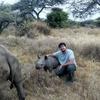






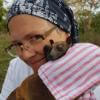
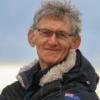




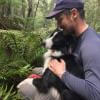




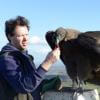

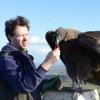

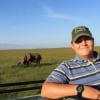

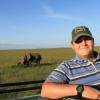



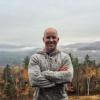
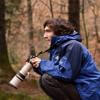

31 October 2016 2:47pm
Sport, Music, Event, Film/Photo are the only options I see on that link - nothing for conservation research.